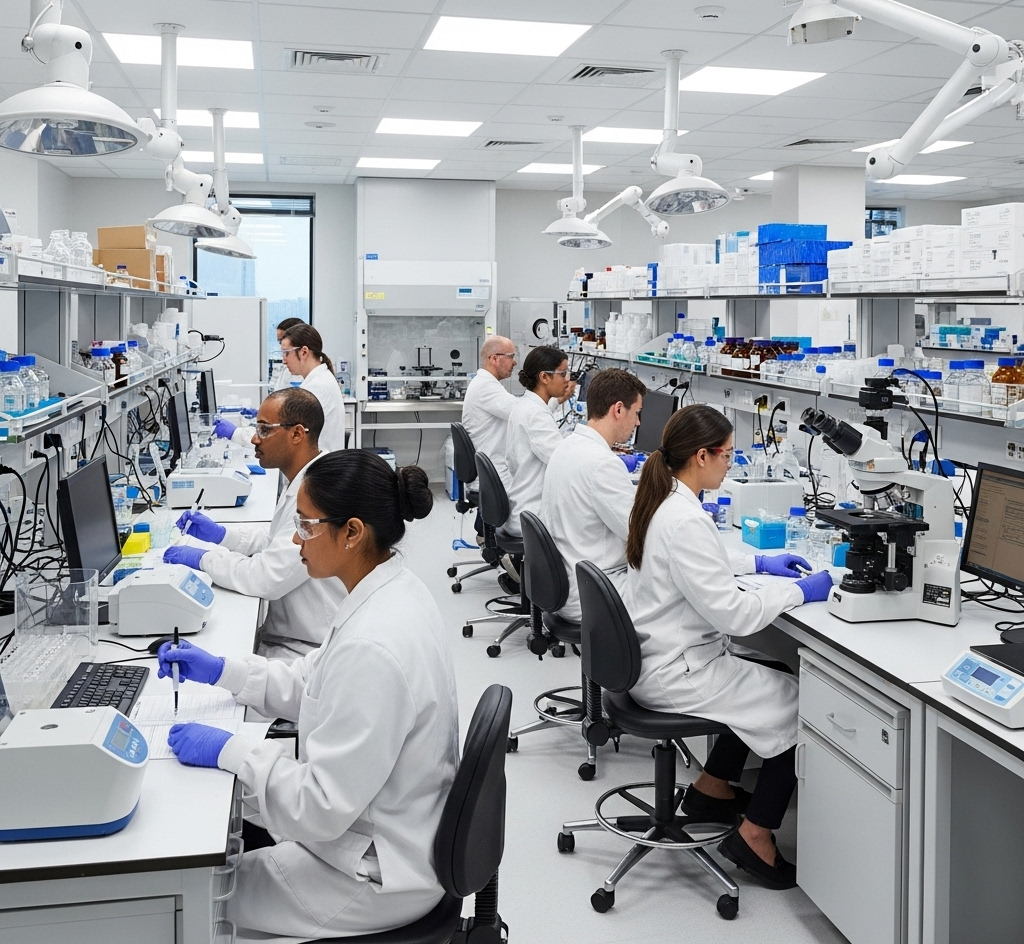
The life sciences industry—encompassing pharmaceuticals, biotechnology, medical devices, and diagnostics—faces unique procurement challenges. Sourcing high-quality materials, navigating stringent regulations, and fostering innovation while maintaining cost efficiency are critical to success. This blog post explores key strategies for optimizing procurement in the life sciences sector, balancing innovation, compliance, and efficiency.
Procurement in life sciences is not just about cost savings. It involves managing complex supply chains, ensuring compliance with global regulations, and securing materials that meet exacting quality standards. Key challenges include:
Regulatory Compliance: Agencies like the FDA, EMA, and others impose strict requirements on materials, suppliers, and processes to ensure patient safety and product efficacy.
Supply Chain Complexity: Raw materials, such as active pharmaceutical ingredients (APIs) or specialized equipment, often come from global suppliers, introducing risks like shortages or geopolitical disruptions.
Innovation Pressure: Rapid advancements in biotechnology and personalized medicine demand agile procurement to source cutting-edge materials and technologies.
Cost Constraints: Balancing R&D investments with cost efficiency is critical in a highly competitive market.
To address these challenges, life sciences companies must adopt strategic procurement practices that align with their goals.
Digital transformation is revolutionizing procurement. Tools like AI-driven analytics, blockchain for supply chain transparency, and e-procurement platforms can streamline processes and enhance decision-making.
AI and Data Analytics: Use predictive analytics to forecast demand, optimize inventory, and identify cost-saving opportunities without compromising quality. For example, AI can analyze supplier performance to reduce risks of delays or quality issues.
Blockchain: Implement blockchain to track materials from source to production, ensuring compliance with Good Manufacturing Practices (GMP) and reducing the risk of counterfeit materials.
E-Procurement Systems: Automate purchase orders, supplier management, and contract negotiations to reduce manual errors and save time.
Example: A pharmaceutical company implemented an AI-powered procurement platform to monitor API suppliers, reducing lead times by 15% and ensuring compliance with FDA standards.
Strong supplier partnerships are essential for securing high-quality materials and mitigating supply chain risks.
Supplier Qualification: Rigorously vet suppliers for quality, reliability, and compliance with regulatory standards. Conduct regular audits to maintain standards.
Collaborative Innovation: Partner with suppliers to co-develop innovative materials or technologies. For instance, collaborating with a biotech supplier could accelerate the development of novel drug delivery systems.
Risk Management: Diversify supplier bases to avoid over-reliance on single sources, especially for critical components like APIs or biologics.
Example: A medical device manufacturer partnered with a supplier to develop a new biocompatible material, reducing production costs by 10% while meeting ISO 13485 standards.
Compliance is non-negotiable in life sciences. Procurement teams must integrate regulatory requirements into every stage of the supply chain.
Standardized Processes: Develop standardized procurement protocols that align with regulations like 21 CFR Part 11 (electronic records) and ICH Q9 (quality risk management).
Traceability: Maintain detailed records of material origins, supplier certifications, and quality tests to ensure audit readiness.
Training: Regularly train procurement teams on evolving regulations to avoid costly compliance failures.
Example: A biotech firm implemented a traceability system to document the sourcing of raw materials, passing an EMA audit with zero non-conformities.
Innovation is the lifeblood of life sciences, and procurement plays a pivotal role in sourcing cutting-edge materials and technologies.
Early Supplier Involvement: Engage suppliers early in R&D to align procurement with innovation goals. This can accelerate time-to-market for new drugs or devices.
Open Innovation Models: Explore open innovation platforms to source novel solutions from startups or academic institutions.
Sustainability: Prioritize eco-friendly materials and suppliers to align with growing demands for sustainable practices in life sciences.
Example: A diagnostics company sourced a novel reagent from a startup through an open innovation platform, reducing diagnostic test costs by 20% while maintaining accuracy.
Cost efficiency is critical, but quality cannot be sacrificed. Strategic procurement can achieve both.
Total Cost of Ownership (TCO): Evaluate suppliers based on TCO, which includes acquisition costs, maintenance, and lifecycle expenses, rather than just upfront costs.
Group Purchasing Organizations (GPOs): Leverage GPOs to negotiate better pricing for commoditized items like lab supplies or packaging materials.
Lean Procurement: Apply lean principles to eliminate waste in procurement processes, such as excess inventory or redundant approvals.
Example: A pharmaceutical company adopted a TCO approach, reducing overall procurement costs by 12% while maintaining GMP compliance.
Supply Chain Disruptions: Build resilient supply chains by mapping risks and maintaining safety stock for critical materials. For instance, during the COVID-19 pandemic, companies with diversified suppliers were better equipped to handle shortages.
Talent Gaps: Invest in training procurement teams in both life sciences regulations and modern procurement technologies to bridge skill gaps.
Data Silos: Integrate procurement data across departments using enterprise resource planning (ERP) systems to improve visibility and collaboration.
Emerging trends are shaping the future of procurement in life sciences:
Sustainability and ESG: Environmental, social, and governance (ESG) criteria are becoming integral to supplier selection as companies aim to reduce their carbon footprint.
Personalized Medicine: Procurement must adapt to source small-batch, high-quality materials for tailored therapies like gene or cell therapies.
Digital Twins: Virtual models of supply chains can simulate disruptions and optimize procurement strategies in real time.
Procurement in the life sciences industry is a balancing act of innovation, compliance, and efficiency. By leveraging technology, building strong supplier relationships, ensuring regulatory adherence, fostering innovation, and optimizing costs, companies can create robust procurement strategies that drive success. As the industry evolves, staying ahead of trends like sustainability and personalized medicine will be key to maintaining a competitive edge.
© 2025 Lasso Supply Chain Software LLC
Get instant access to our report on the Top Procurement Trends of 2025.
Get instant access to our report on the Top Procurement Trends of 2025 by filling out the form below.
